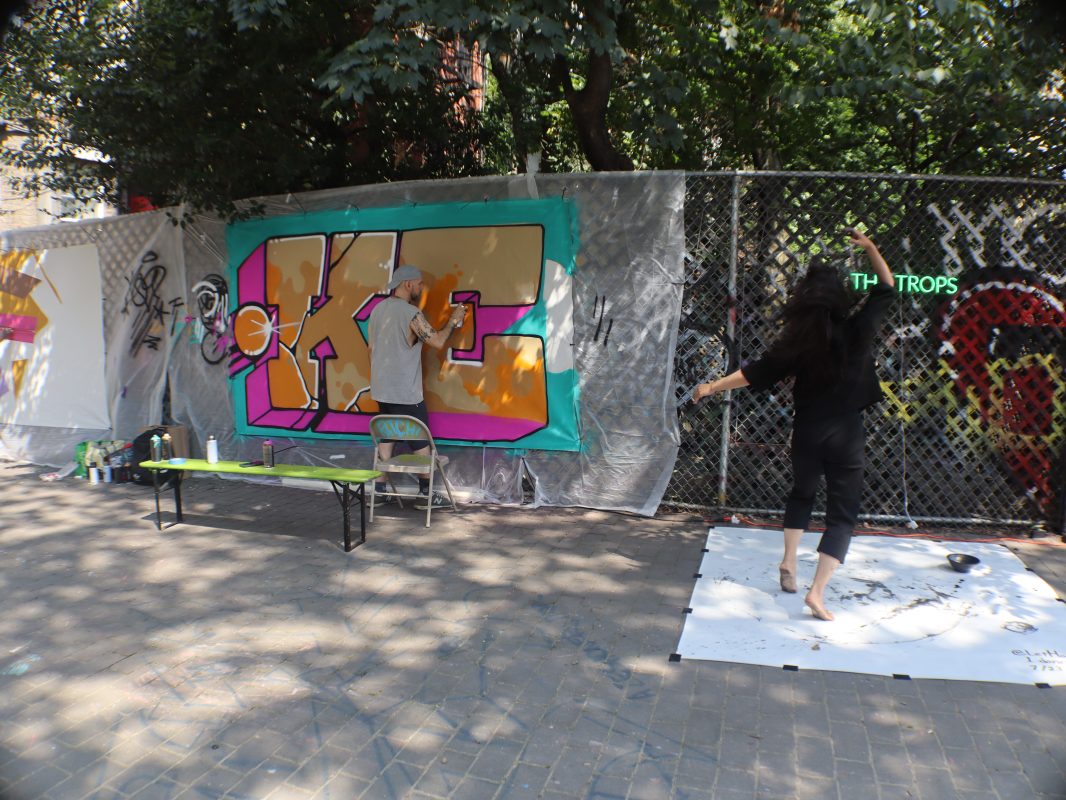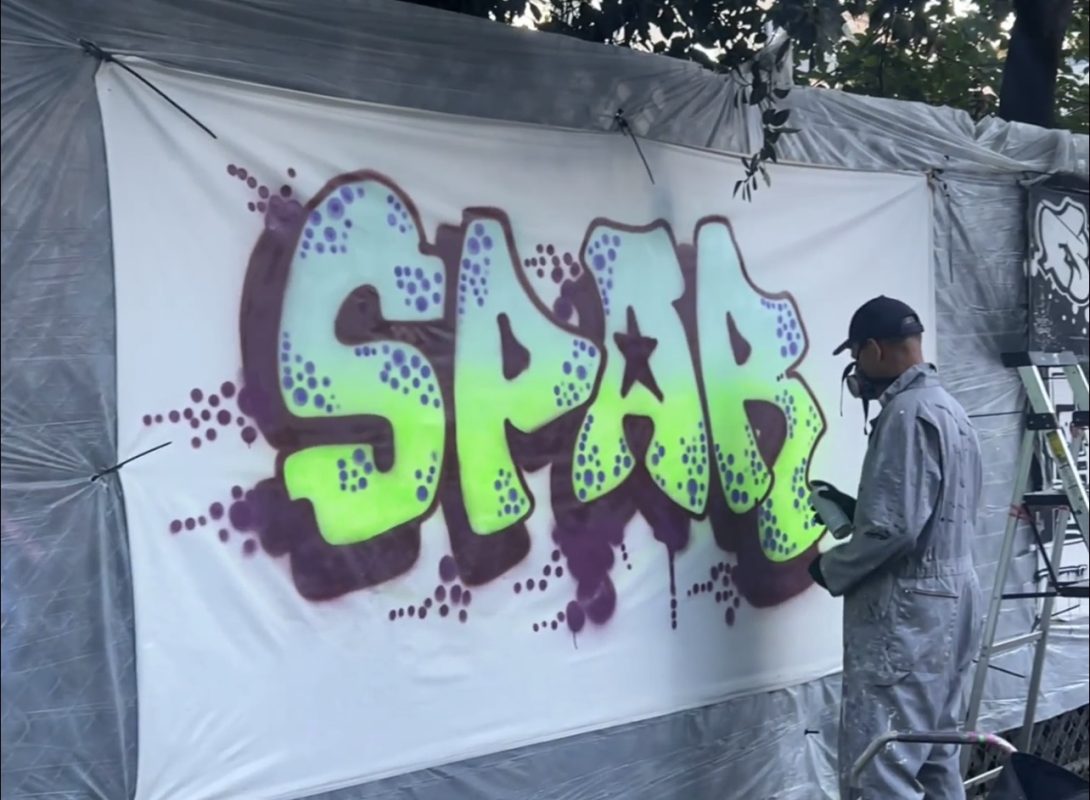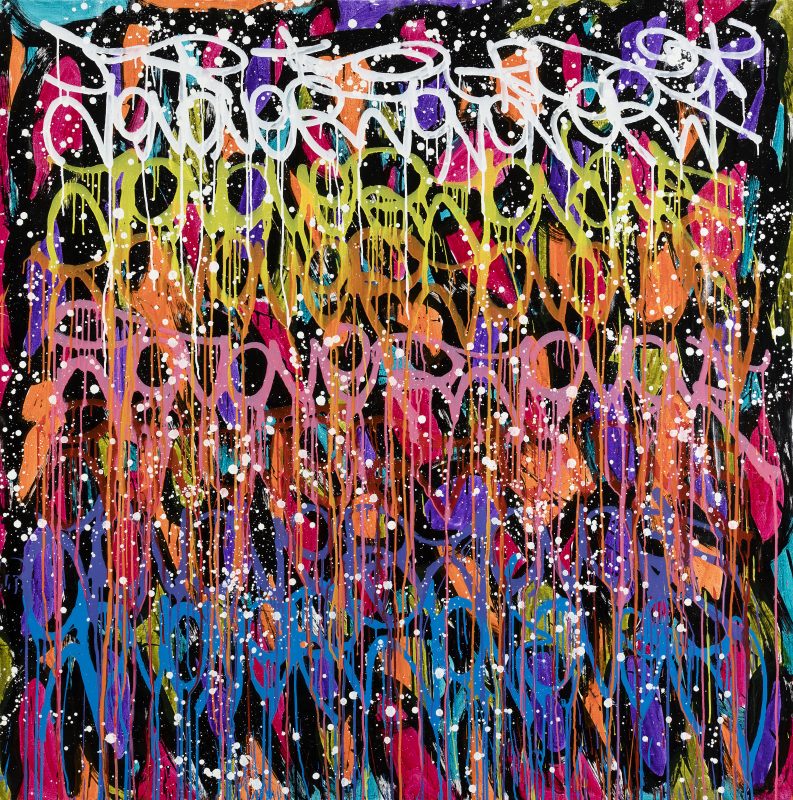Tracy 168
To begin to discuss the graffiti movement in New York is to embark on a treacherous journey; you must carefully traverse across seas of misrepresentations and through muddled webs of distortions spun by media. Let the artists themselves be our leaders, the truest definition of explorers wandering uncharted territory. We are Dante, and the artists, our Virgil, their poetry guiding us through urban hell. As someone who is only at the beginning of properly appreciating and excavating the Graffiti movement, I write in caution of adding to an already convoluted history but with extreme wonder and appreciation for a culture that constructed something truly unique. In line with these artists using individual skill to identify with something larger than themselves, attempting to chronicle this movement has been an important reminder that the more you learn, the less you know.

Tracy 168, 1970s
We can trace the origins of graffiti back to the Lascaux Caves, Egyptian hieroglyphs, fresco murals on cathedral walls, or the Roman vandals that defiled the Pasquino statues. The modern style-writing movement in New York used the same forms of satirical poetry to express disbelief in the system, show solidarity, or serve as a proclamation of individual identity within a larger community. But unlike previous centuries of public “vandalism,” the New York writing scene harnessed a unique tool: public transportation. Trains transformed public works of art from solitary moments of reflection into portable messages of rebellion. Their works were no longer bound to physical space or time – their names spread across the city like venom, a constant stream of visual rallying cries that inculcated anyone in their wake. When asked why he thought this movement spread throughout the world, Coco 144 said, “making your mark is a contagious virus with no known vaccination or cure.”
Spanish Harlem in the sixties was a mecca of vacant plots and abandoned buildings. As factories closed and workshops moved away from the city, it became the perfect playground for artists with an itch to paint – without the cost of stretcher bars, canvas, and a physical space to work. The city became their studio, train cars became mobile canvases presentable to the entirety of New York. Names that originated in the Bronx would end up in downtown Manhattan, an exchange of personal invitations waiting to be answered. Taki 183 (short for Dimitraki, an alternative to his birth name Demetrius, and his address in Washington Heights on 183rd street) was one of the names that began to pop up in the late 60s and early 70s. He used direct, straight lines to construct this simple tag, and in July 1971 it caught the attention of a NY Times reporter. Don Hogan’s “'Taki 183' Spawns Pen Pals” was one of the earliest pieces of media coverage on the movement, providing a biography on the artist (as much as one can survey someone trying to stay anonymous) and analysis of some of his works. This article inspired artists to have a strategic, citywide approach to their writing.
In the seventies, the term “Wildstyle” was used to describe the evolution of graffiti toward full-fledged artworks and away from more fundamental tags. Angular letters, pointed arrows, and curved lines characterized this style, often making it difficult for the viewer to decipher the distorted image. Phase 2 specifically developed these bubble-style letters rendered three-dimensionally, known as “mechanical letters” or “softies." Hugo Martinez, who founded the United Graffiti Artists collective, of which Phase 2 was a member, said “his lettering constantly changed; you never saw his tag repeat itself. He was constantly trying to destroy himself, destroying his previous style.” Wildstyle became especially popular in New York in the seventies and eighties as its complexity allowed artists to showcase their skill and range.
Although John Lindsay and Ed Koch poured $300 million into the War on Graffiti to keep it off transit systems and out of the streets, this only propelled the evolution of style within the movement. Although works wouldn’t last for more than a day, newly-cleaned trains provided artists with large, blank, portable canvases that moved around every inch of the city. Wildstyle flourished and whole-car specialists added scenery and characters to their pieces, using starbursts, outlines, and shadows to add personality. Others mastered the art of the throw aiming for quick execution and anonymity. Phase 2 enjoyed the thrill of writing on subway cars and called it “impact expressionism.” In an interview with Adam Manbasch of Wax Poetics magazine, he recalled writing a poem to a police officer on the vandal squad who had just missed arresting him: “If you only knew/the real Phase 2/the super sleuth/who’s still on the loose.”
Phase 2. Photo by Michael Lawrence and Herbert Migdoll
By 1977, the foundations of the culture were fully formed, and artists were now fighting to be recognized by the quality of their works, the amount they were painting, or location of their tags. Artists like Fab 5 Freddy began bombing whole cars with murals. With his connection to Lee Quinones’s Fabulous 5 crew, Freddy became an important link between uptown hip hop and graffiti scenes and downtown punk and art worlds. There were artists like Coco 144, who in 1969 was only a teenager just beginning to paint, after seeing Taki 183 and Julio204 in upper Manhattan. By 1971, he was all-city and up there with Phase 2. He famously called Phase 2 “a person from another dimension that came in and deconstructed the letter and reconstructed it again.” With Hugo Martinez, Coco 144 cofounded the United Graffiti Artists in 1972 and was a huge player in moving graffiti from walls to trains. He was also one of the first to introduce stencils into the graffiti movement, allowing for more precision, attention to detail, and for “obvious tactical reasons.”

Fab 5 Freddy, Soup Cans, 1980
The first major introduction of graffiti into the fine art world was driven by the LES galleries and European art market (primarily Denmark, France, and the Netherlands). It all happened pretty quickly; both Phase 2 and Coco 144 were in the first gallery show that featured graffiti, a United Graffiti Artists presentation at the Razor Gallery in SoHo in September 1973. By the beginning of 1975, Phase 2 had largely given up subway graffiti, moving his work onto paper and canvas or into sculpture. In 1979, Galerie le Medusa invited Fab 5 Freddy and Lee Quinones to exhibit in Italy, the first time graffiti was exhibited overseas. And by 1980, Lee had his first New York show at White Columns, officially signifying aerosol paint’s transition from moving objects back to stationary works (this time inside galleries instead of the outside of buildings). The Times Square show in 1980 incorporated Basquiat and Keith Haring, widening “street art” to include graffiti, fine art, and the integration of the two. In early 1981, Fab 5 Freddy, together with Futura, curated the Mudd Club show Beyond Words, an important early exhibition that brought together graffiti-based artists and downtown fine artists. Over two dozen canvases, along with early photos from Martha Cooper and Henry Chalfant were shown as part of an exhibition on graffiti at UCSC in 1982.
In the same year, back in New York, 51X Gallery opened just 2 blocks away from Fun Gallery, expanding access to and the content of Graffiti art. Dondi’s show at 51X, The Ugly Man, expanded his visual repertoire toward more abstract and “atmospheric” pieces. But museum acceptance in Europe was one of the key factors of Graffiti’s early canonization. Graffiti at the Boijmans-Van Beuningen in Rotterdam in 1983 featured the second-generation stars – Seen, Futura, Crash, Quik, etc. – and the same show spread the formal appreciation of Graffiti first to the Groninger Museum, then to the Stedelijk in Amsterdam, and across Denmark’s Loudian Museum in 1984.
It’s important to note the term “graffiti” is largely contested within the movement itself. Coco 144 explained that what the media would call the Graffiti movement, he would call the Writing Movement in New York. As the movement shifted from a “social scream of the inner city to a large-format, graphic design-like urban beautification movement,” “graffiti” was repackaged into an art market-friendly term to easily categorize and sell the work.
For artists developing the movement, writing was “a reflection of the times… a combination of the spirit of the anti-war movement, frustration with economic and social inequality, and racial and political tensions.” Phase 2 crucially rejected the word “graffiti,” or “the G-word” as he called it, and preferred a term like “style-writing.” But what word could ever adequately encapsulate the original intentions of the movement, and track its evolution not just stylistically, but socially, over time? “It’s like calling a meteor a pebble,” Phase 2 said in an interview with Raw Vision magazine in 1997. He would describe his artistic development as “absorbing and devouring language in its coexisting state and creating something else with it.” Now how do we find an appropriate word for that?






